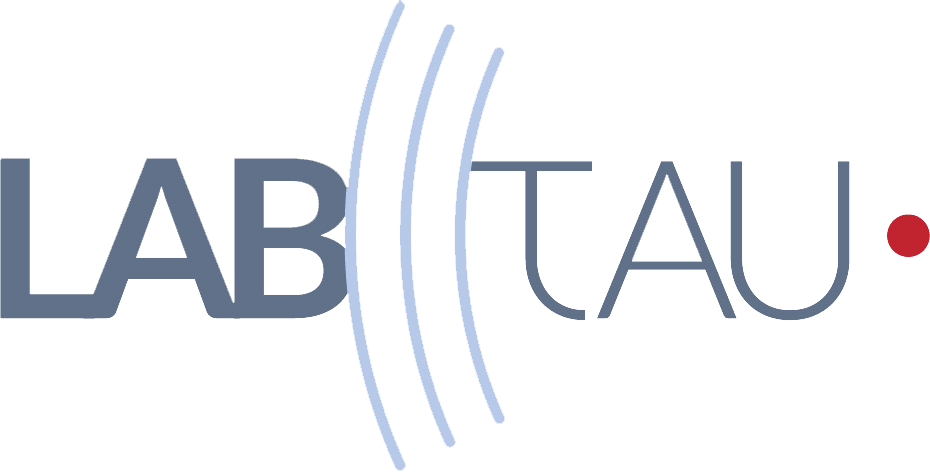Seminars

Author: Martial Defoort
Time: 11H00
Language: French/English
Place: Conference Room at LabTAU
Abstract: Ultrasounds for embedded applications: from power transfer to secured communications.
This presentation will focus on the generation and exploitation of ultrasound produced by piezoelectric transducers ranging from centimeter-scale devices (e.g., ceramic types) to micrometer-scale devices (e.g., PMUTs), operating from the linear to the nonlinear regime. In the first part, the emphasis will be placed on the use of these devices in the linear regime for wireless power transfer, with the goal of efficiently recharging medical implants located deep within the human body. Preliminary results demonstrate that acoustic energy can be transmitted through biological tissues at power levels sufficient to supply devices such as pacemakers, while complying with medical safety requirements.
In the second part, the presentation explores the potential of the nonlinear regime of PMUTs, particularly their ability to generate chaotic signals, for use in acoustic cryptography. By leveraging the intrinsic dynamic complexity of these systems, it becomes possible to envision secure communication schemes between external devices and medical implants, making data exchanges more resistant to interception or hacking. This presentation will highlight the feasibility of generating such chaotic behavior using standard PMUTs, without requiring significant hardware modifications, paving the way for easy integration into existing systems. This original approach, at the crossroads of nonlinear physics, microtechnology, and medical cybersecurity, offers a promising new avenue for securing the next generation of connected implants.

Author: Jessica Gannon
Time: 11H00
Language: English
Place: Conference Room at LabTAU
Abstract:
Ultrasound-Guided Non-Invasive Pancreas Ablation Using Histotripsy: Feasibility Studies in Porcine Models
Pancreatic cancer is an aggressive disease that is typically diagnosed late-stage leading to poor prognosis and overall survival. Even with advances in treatment, the five-year survival rate for patients is only 12.5% with only 20% of patients presenting with resectable tumors. Histotripsy is a non-invasive, non-thermal, and non-ionizing focused ultrasound ablation method that has recently been FDA approved for treating hepatic tumors and is currently being investigated for other malignancies. This study expands upon prior work by our group investigating the feasibility of non-invasive pancreas ablation using ultrasound-guided histotripsy in a healthy chronic porcine model. Additional work by our group includes the development of an immunocompromised porcine model allowing us to surgically inject and grow human Panc-01 tumors orthotopically to target with histotripsy. While results from these studies are promising, they also highlight the challenges of targeting the pancreas through an extracorporeal approach due to overlying gas-filled tissues. Therefore, we are also investigating the development of endoscopic histotripsy devices for minimally invasive tissue ablation which has led to the collaboration between our two labs.

Author: Marie Poulain-Zarcos
Time: 14H00
Language: English
Place: Meeting Room at LabTAU
Abstract: Microstructure of sheared dense suspensions of Red Blood Cells (RBCs)
Blood is a non-Newtonian fluid that exhibits shear-thinning behavior (decreasing viscosity with increasing shear rate). This increases oxygen transport in the body. This shear-thinning behavior is influenced by (1) blood aggregation and (2) RBC deformability. Both of these characteristics can be affected in certain diseases such as diabetes or sickle-cell anemia (hyper-aggregation and greater rigidity of RBCs, which can lead to painful vaso-occlusive crises). In this seminar, we propose two experimental techniques for assessing these two characteristics.
Firstly, using ultrasonic measurements, I will present the characterization of blood aggregation (aggregate size, polydispersity, etc.). The clinical application is to estimate the rate of aggregation in blood and (in the longer term) to enable pre-diagnosis.
Secondly, using optical measurements in a microfluidic channel, I will present the modification of RBC microstructure and dynamics induced by a change in their deformability. A comparison with sickle cell cells will be presented. The clinical application is to estimate the variability of RBC deformability and (in the longer term) to enable monitoring of sickle cell disease.
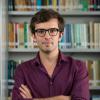
Author: Adrien Rohfritsch
Time: 11H00
Language: French/English
Place: Conference Room at LabTAU
Abstract:
La connaissance précise des propriétés acoustiques d’un milieu hétérogène est d’une importance majeure dans de nombreux domaines d’application, tels que l’imagerie, le contrôle non destructif, le développement de métamatériaux ou la thérapie par ultrasons focalisés. La propagation des ultrasons dans un tel milieu est régie à la fois par les propriétés de l’onde incidente, la taille des hétérogénéités du milieu, leurs propriétés acoustiques et leur distribution spatiale. La prise en compte de tous ces facteurs est un défi qui limite la plupart du temps le champ d’application d’une ´étude numérique ou d’un modèle théorique. Nous présentons un code de calcul récent, MuScat, qui permet de pallier ces problèmes. Il rend possible le calcul du champ formé par l’interaction de l’onde incidente avec un milieu peuplé de plusieurs milliers de diffuseurs cylindriques ou sphériques. Ce code fréquentiel prend en compte les effets de diffusion multiple `a tous les ordres ainsi que la taille des particules, leurs propriétés mécaniques et leurs positions. Ce dernier point permet de modéliser exactement n’importe quel type de microstructure (i.e. la distribution spatiale des diffuseurs dans l’espace). La diffusion par une particule est modélisée par la matrice de diffusion décomposée sur la base modale, et les interactions entre particules sont décrites à l’aide de la théorie de la diffusion multiple linéaire.
Une première étude d´démontre la possibilité de tirer profit des corrélations spatiales à courte portée (appelées SRC pour Short Range Correlation) et longue portée (SHU, pour Stealth Hyperuniform) afin de fabriquer des matériaux aux propriétés surprenantes et très prometteuses pour le d´développement de m´métamatériaux de nouvelle génération. Une seconde ´étude se focalise sur la détection de lésions créées par ultrasons focalisés de haute intensité (HIFU) à l’intérieur du tissu hépatique. Le passage du faisceau focalisé créé une anisotropie locale dans le réseau cellulaire, qui modifie le signal rétrodiffusé par le milieu. Nous quantifions ce phénomène grâce à des simulations numériques et le corrélons à l´évolution du facteur de structure de la zone traitée. Nous montrons pour finir de premiers résultats expérimentaux ouvrant la voie à un nouveau moyen de suivi temps réel des traitements thermiques par HIFU.

Author: Juliette Pierre
Time: 11H00
Language: French
Place: Conference Room at LabTAU
Abstract: Acoustic signature of hydrodynamics events
Gas-liquid systems are ubiquitous in industrial, food, biological or geophysical contexts. The popping noise of a bursting bubble, the crackle sounds of ageing foams, the whistling of nucleating water, the fizzing of champagne, the drumming of rain and the thud of degassing volcano magmas evidence the radiation of sound by these violent interfacial hydrodynamic events.
Such events evolve according to various processes occurring at several different length scales and over several different time scales. These non-equilibrium systems are mainly studied using fast optical imaging, which allows us to follow the reconfiguration of certain liquid-gas interfaces over time. By adding acoustic measurements, we also have access to the pressure field generated.
In this presentation I will present our recent investigations about the spatio-temporal acoustical signature of violent hydrodynamic events such as : bubble bursting, drop impact or film bursting. By combining the use of acoustic sensors, fast optical imaging and theoretical modeling, we aim to monitor and characterise these violent events and elucidate the physical mechanisms at play in their existence and their evolution.

Author: Christina Tsarsitalidou
Time: 11H00
Language: French/English
Place: Conference Room at LabTAU
Abstract: Seismic imaging constitutes a fundamental building block of Earth Science research as the obtained
images or snapshots of our planet’s interior challenge our understanding of plate tectonics, yield
information on fault zone environments and inform many near-surface engineering applications. In
this work, we explore the imaging potential of refocusing surface waves reconstructed from noise
correlation functions so as to estimate the seismic velocity. At zero lag-time, converging surface
wave fields create a large amplitude feature at the origin referred to as focal spot. Its properties are
governed by local medium properties and have long been used in medical imaging approaches such
as passive elastography. We treat dense seismic arrays equivalent to medical ultrasound transducers
that allow the reconstruction of focal spots at near-field distances. We focus on demonstrating the
general applicability of the method using the USArray dataset, but we also investigate the biasing
effects of ambient wave field properties on our estimates, like impinging body wave energy and
non-isotropic energy flux.

Author: Dr Laura CURIEL - Assistant Professor - Department of Electrical and Software Engineering University of Calgary
Time: 11H00
Language: French
Place: Conference Room at LabTAU
Abstract: Le pilotage multiaxial est une nouvelle méthode d’excitation des matériaux piézoélectriques qui utilise une combination des modes de vibration extensionnel et latéral pour moduler le faisceau ultrasonore produit. Il a été démontré que cette méthode peut produire différents effets : une modulation de l’efficacité électroacoustique, une déflection de l’axe d’émission sans avoir à utiliser multiples éléments piézoélectriques, et un control et réduction de la taille focale, en particulier quand un réseau d’éléments multiaxial est utilisé. Dans ce séminaire on discutera les principes du pilotage multiaxial des transducteurs, ses avantages et les applications initiales explorées par notre groupe de recherche. Ensuite, une introduction sur les applications émergentes de la méthode en ce qui concerne des dispositives animaux, ou la réduction de la taille focale présente des avantages, seront décrites.
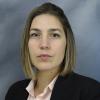
Author: Marie Muller
Time: 11:00
Place: Salle de conférence de l'INSERM, 151 Cours A. Thomas
Summary: Parce qu'ils sont non-invasifs, relativement peu coûteux et faciles d’accès, les ultrasons sont une modalité d'imagerie et de caractérisation des tissus particulièrement attractive. Par ces aspects, cette modalité est plus prometteuse que toute autre pour le screening de maladies répandues (comme le cancer et l’ostéoporose, qui affectent des millions d'individus chaque année), ainsi que pour le suivi de la réponse de patients à des traitements thérapeutiques. Il y a cependant de gros inconvénients aux méthodes ultrasonores: elles manquent de spécificité, et ne sont pas adaptées à des organes a la structure complexe tels que l'os et le poumon, car la propagation ultrasonore ne s'y fait pas de manière classique. Il est toutefois possible de tirer profit de la complexité de ces milieux, pour révéler de nouvelles sources de contraste. La propagation des ondes ultrasonores dans des milieux tels que l'os et le poumon est associée à des phénomènes de diffusion qui peuvent être exploités. En modélisant la diffusion et l’atténuation ultrasonore en milieu complexe plutôt que de simplement se fonder sur des principes d’écholocation, il est possible de caractériser la microstructure de manière quantitative. Nous présenterons des exemples dans les réseaux vasculaires angiogeniques, dans l'os et dans le poumon. Nous montrerons comment ces mécanismes de diffusion peuvent être invoqués pour évaluer la malignité de tumeurs, l’ostéoporose ou des pathologies telles que la fibrose ou l'oedème pulmonaire.
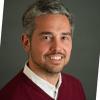
Author: Francesco Prada
Time: 11:00
Place: Salle de conférence 151 Cours Albert Thomas, 69003 Lyon
Summary:
Dr. Prada earned his degrees and residency at the “Università degli Studi” of Milan, Italy, perfectioning his training in major centers worldwide.
He is currently neurosurgeon in the Department of Neurosurgery at the Fondazione IRCCS Istituto Neurologico C.Besta in Milan, Italy, where he shared his interests between clinical practice, mainly focusing in skull base/pituitary surgery and neuro-oncology, and research, studying intra-operative applications of ultrasound for the treatment of cerebral and spinal tumor and vascular lesions and advanced ultrasound techniques such as Fusion Imaging for Virtual Navigation, contrast enhanced ultrasound (CEUS) and elasto-sonography.
He is now the Director of the “Ultrasound Neuro-Imaging and Therapy Lab” (UNIT-Lab), performing pre-clinical, clinical and technical research in ultrasound imaging and therapy for various neurological conditions.
He is also founder and developer of In.Tra. and Neuro-stream, start-ups related to the application of ultrasound to the brain.
Dr. Francesco Prada joined the Focused Ultrasound Foundation in Charlottesville (USA) in July 2017 where he was recipient of the Merkin Fellowship. Since July 2018 he has also been named in Brain Program Director of the Focused Ultrasound Foundation.
He is currently Visiting Professor in the Department of Neurological Surgery, University of Virginia Health Science Center in Charlottesville, Virginia (USA) where he is conducting clinical and pre-clinical researches in the field of focused ultrasound.
Dr. Prada earned his degrees and residency at the “Università degli Studi” of Milan, Italy, perfectioning his training in major centers worldwide.
He is currently neurosurgeon in the Department of Neurosurgery at the Fondazione IRCCS Istituto Neurologico C.Besta in Milan, Italy, where he shared his interests between clinical practice, mainly focusing in skull base/pituitary surgery and neuro-oncology, and research, studying intra-operative applications of ultrasound for the treatment of cerebral and spinal tumor and vascular lesions and advanced ultrasound techniques such as Fusion Imaging for Virtual Navigation, contrast enhanced ultrasound (CEUS) and elasto-sonography.
He is now the Director of the “Ultrasound Neuro-Imaging and Therapy Lab” (UNIT-Lab), performing pre-clinical, clinical and technical research in ultrasound imaging and therapy for various neurological conditions.
He is also founder and developer of In.Tra. and Neuro-stream, start-ups related to the application of ultrasound to the brain.
Dr. Francesco Prada joined the Focused Ultrasound Foundation in Charlottesville (USA) in July 2017 where he was recipient of the Merkin Fellowship. Since July 2018 he has also been named in Brain Program Director of the Focused Ultrasound Foundation.
He is currently Visiting Professor in the Department of Neurological Surgery, University of Virginia Health Science Center in Charlottesville, Virginia (USA) where he is conducting clinical and pre-clinical researches in the field of focused ultrasound.

Author: Dr Mario Ries – Image Sciences Institute-University Medical Center Ultrecht
Time: 2 PM
Place: LabTAU – Conference Room
Summary:
While therapeutic HIFU applications in the linear pressure regime have meanwhile established their place in numerous clinical applications, non-linear acoustic phenomena have despite their considerable potential so far been left largely unexploited.
Here we contrast the in-vivo experience of the UMC-Utrecht with non-linear acoustic applications for local control vs systemic therapy. Shock wave enhanced HIFU thermotherapy can hereby overcome the typical limitations of HIFU ablations in high perfused organs such as the liver, while mechanical tissue fractionation allows transforming immunologically 'cold' Neuroblastoma tumors into responsive 'hot' tumors, which in combination with immune checkpoint inhibitors lead to a systemic response.

Author: Maxime Polichetti
Summary:
Ce travail s'intéresse au suivi spatio-temporel par imagerie ultrasonore de la cavitation acoustique, utilisée au cours de certaines techniques de thérapie par ultrasons, correspondant à la formation de bulles de gaz qui oscillent et éclatent.
Initialement, la méthode TD-PAM (Time Domain Passive Acoustic Mapping, en anglais), a été développée pour cartographier l’activité de cavitation à partir des signaux acoustiques émis par les bulles, enregistrés passivement par une sonde linéaire d'imagerie ultrasonore. Toutefois, le TD-PAM souffre d’une trop faible résolution et de nombreux artefacts de reconstruction. De plus, il est lourd en temps de calcul car il est formalisé dans le domaine temporel (TD).
Pour pallier ces deux limitations ce travail propose des méthodes avancées d'imagerie ultrasonore passive de la cavitation. La présentation s'articule autour de deux contributions principales :
• La notion de matrice de densité inter-spectrale a été introduite pour l'imagerie de la cavitation. Dès lors, quatre méthodes d’imagerie dans le domaine de Fourier (FD) ont été étudiées, adaptées et comparées : le FD-PAM (non-adaptatif), la méthode Robuste de Capon FD-RCB (adaptatif, par optimisation), le Functional Beamforming FD-FB (adaptatif, par compression non-linéaire) et la méthode MUltiple Signal Classification FD-MUSIC (adaptatif, par projection en sous-espaces).
• Les performances de ces méthodes FD ont été étudiées expérimentalement in vitro cuve d’eau avec une comparaison par imagerie optique. Les méthodes adaptatives FD proposées ont démontré leur potentiel à améliorer le suivi spatio-temporel des bulles. Le FD-RCB offre une localisation supérieure au FD-PAM mais souffre d'une importante complexité algorithmique. Les performances du FD-FB sont intermédiaires à celles du FD-PAM et du FD-RCB, pour une complexité de calcul équivalente au FD-PAM. Le FD-MUSIC a le potentiel de mettre en évidence de faibles sources acoustiques, mais ne conserve pas leurs quantifications relatives
Time:11:00
Place: Salle de conférence, INSERM 151 Cours A.Thomas, LYON

Author: Xueding Wang
Summary:
Photoacoustic imaging (PAI), also referred to as optoacoustic imaging, is an emerging biomedical imaging technology that is noninvasive, nonionizing, with high sensitivity, satisfactory imaging depth and good temporal and spatial resolution. Like conventional optical imaging, PAI presents the optical contrast which is highly sensitive to molecular conformation and biochemical contents of tissues and can aid in describing tissue metabolic and hemodynamic changes. Unlike conventional optical imaging, the spatial resolution of PAI is not limited by the strong light diffusion but instead determined by the measurement of light-generated ultrasonic signals. As a result, the resolution of PAI is parallel to high-frequency ultrasonography.
At the University of Michigan School of Medicine, our research has been focused on clinical applications of PAI, including arthritis, cancer, liver conditions, Crohn’s disease, and eye diseases. In this talk, I will introduce some of our recently development of PAI technologies, including 1) development of point-of-care PAI system for human inflammatory arthritis, and 2) development of quantitative PAI for evaluating histological microfeatures and microenvironment of cancer. I will also present our recent development of a photoacoustic based anti-vascular technology named photo-mediated ultrasound therapy (PUT). Using a combination of a low intensity laser concurrently with ultrasound, PUT can noninvasively remove microvessels without damaging surrounding biological tissue, and shows potential to the treatment of a variety of diseases associated with neoangiogenesis, such as age-related macular degeneration and diabetic retinopathy.
Time:15:00
Place:Salle de conférence
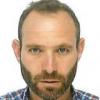
Author: Stephane Marinesco
Summary: Ce séminaire passera en revue les différents modèles de traumatisme crânien modéré et sévère chez le rat ainsi que les difficultés particulières liées à l’induction d’un trauma sévère chez l’animal. Les mécanismes lésionnels aboutissant à des lésions neurologiques et des déficits comportements seront également discutés.
Time:11:00
Place: Salle de réunion du LabTAU 151 Cours A.Thomas LYON

Author: Zhishen Sun
Background: Elastography uses shear waves to measure or map the shear modulus for the soft biological tissues [1]. The electromagnetic actuators in magnetic resonance elastography were inexpensive and comparatively simple, and they could work over a wide range of frequency and produce large displacements on the order of 400 μm [2]. However, the electromagnetic actuators currently reported could only work in the MRE but not in ultrasound elastography or optical coherence elastography (OCE) because a strong static magnetic field was needed to create the Lorentz force. On the other hand, induction of shear wave using transcranial magnetic stimulation succeeded in generation of shear wave in soft biological tissues contactlessly [3]. But the shear wave produced by this method was too weak for clinical application - on the order of 0.5 μm. Moreover, this method required additional permanent magnets to create a static magnetic field. This article describes an electromagnetic actuator for the generation of shear waves in the soft media.
Aims: This work aims to confirm the feasibility of generation of shear waves in soft media using an electromagnetic actuator.
Methods: The physics of the force acting on the actuator is explained using classical electromagnetism. The characteristics of the force acting on the actuator are studied by the displacement measurement using an interferometric laser probe (Interferometric probe SH-140, THALES LASER S.A., Orsay, France). The shear wave displacement field generated by the actuator in the PVA phantom is imaged by an ultrasound scanner (Verasonics Vantage 256TM, Washington, USA). The shear wave displacement field was also simulated using the Green function.
Results: The interferometric laser measurement confirms the characteristics of the force acting on the actuator. The actuator generates a shear wave field source of amplitude of 20 μm in the sample of polyvinyl alcohol (PVA) phantom. The shear wave fields created in the PVA phantom by experiments agrees well with that by simulation.
Conclusions: The electromagnetic actuator proves to generate strong shear wave displacement fields.
Time:11:00
Place:Salle de conférence, INSERM 151 Cours Albert Thomas, LYON

Author: Alexander Doinikov
Time: 14H
Place: AMPHI EST, BÂT HUMANITÉS, INSA DE LYON
Summary: When a body in a fluid is subjected to an acoustic wave field, the scattered wave from the body interacts with the incident wave, giving rise to the co-called acoustic radiation force. This force makes the body migrate in space, and in the case of two or more bodies, causes repulsion or attraction between them. An understanding of this motion is important to applications such as acoustomicrofluidics and medical ultrasonics. The history of theoretical studies of acoustic radiation forces (...)

Author: Thomas Payen
Summary: Harmonic Motion Imaging for pancreatic cancer detection and treatment monitoring- Pancreatic ductal adenocarcinoma (PDA) is one of the deadliest cancers mostly because of late detection due to lack of or unspecific symptoms. One of the main characteristics of PDA is its unusually dense stroma which lower chemotherapy perfusion and efficiency. Developing an imaging technique fit for screening purposes and capable of probing this deep-seeded organ is crucial to improve pancreatic cancer prognosis. During my postdoc at Columbia university, I worked on developing an elastography technique called Harmonic Motion Imaging (HMI) based on an amplitude modulated HIFU signal. The technique was performed in vivo in genetically-engineered mouse models for early tumor detection, pancreatic tissue characterization, and treatment monitoring. HMI was shown to be capable of differentiating healthy pancreas, PDA, and even premalignant pancreatic intraepithelial neoplasias (PanINs), showing that pancreatic tissues get stiffer as the disease progresses. The mechanical response of tumor tissue to HIFU ablation, chemotherapy and stroma depleting enzyme were all successfully monitored with HMI. Finally, HMI was transferred to postsurgical human specimen to demonstrate its feasibility. The technique was capable of detecting both the tumor within perilesional tissue, and regions with normal tissue. In addition, response to neoadjuvant therapy (chemotherapy and radiations) were detected in tumor and normal pancreatic tissue. HMI could potentially prove to be highly beneficial in pancreatic cancer to improve its poor clinical prognosis with early detection, specific characterization, and treatment monitoring
Time:11:00
Place: Salle de réunion LabTAU 151 Cours A.Thomas Lyon

Author: Robin Cleveland (Institute of Biomedical Engineering, Department of Engineering Science, University of Oxford)
Summary: Traumatic brain injury has been reportedly widely in the press with respect to athletes subject to head impact and military personnel subject to blast waves. In the case of direct impact there is a typically an acute response, concussion, which can lead to chronic injury to the brain that develops over months and years. The chronic injury manifests itself in issues with memory, mood, and attention. In the case of blast waves there is typically no concussion and yet the chronic brain injury has remarkably similarities. Here we use numerical models and experiments with mice to compare injury induced by blast waves and impact. It is shown that the direct passage of sound energy from the blast wave into the brain tissue does not induce injury or affect memory. Rather it is the oscillation of the head, due to the radiation pressure from the blast wave, that induces shear forces which result in the injury that affects memory.
Time: 11:00
Place: Salle de conference 151 cours albert Thomas 69003 Lyon
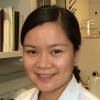
Author: Karla P. Mercado-Shekhar, Ph.D.
Summary: Clot stiffness is inversely correlated with rt-PA thrombolytic efficacy in vitro -Predicting thrombolytic susceptibility to recombinant tissue plasminogen activator (rt-PA) a priori could help guide clinical decision-making during acute ischemic stroke treatment and avoid adverse off-target lytic effects. Prior research has shown that the composition and structure of clots impact their mechanical properties and rt-PA thrombolytic efficacy. The goal of the current research was to determine the relationship between clot elasticity and rt-PA thrombolytic efficacy in vitro. Human and porcine mildy and highly retracted clots were fabricated in glass pipettes. The rt-PA thrombolytic efficacy was evaluated in vitro using the percent clot mass loss. A second set of clots were embedded in agar phantoms. Subsequently, the Young’s modulus of each clot was estimated using single-track-location shear wave elasticity imaging. The imaging sequence was implemented using a Verasonics Vantage 256 system equipped with an L7-4 linear array. The results revealed an inverse relationship between the Young’s moduli and clot mass loss, indicating that stiffer clots are more difficult to lyse with rt-PA. This work suggests that clot stiffness may serve as a predictive metric for rt-PA thrombolytic efficacy. Additionally, this presentation will briefly discuss ongoing projects at the Image-guided Ultrasound Therapeutics Laboratories in the University of Cincinnati. These projects include ultrasound-assisted thrombolysis, ultrasound-triggered bioactive gas delivery, and passive cavitation image guidance and monitoring of ultrasound therapeutics.
Time:11:00
Place: Salle de conférence

Author: Jonathan Mamou
Summary: High-frequency ultrasound (HFU, >20 MHz) and scanning acoustic microscopy (SAM, >200 MHz) offer a means of investigating biological tissue at the microscopic level with spatial resolutions better than 100 μm or 10 μm, respectively. After a brief review of conventional ultrasound imaging, this talk will introduce HFU imaging and present two HFU examples and one SAM example.
Novel HFU imaging methods to form three-dimensional (3D) images of the brain of developing mouse embryos: Many genetically-engineered mice display abnormal development of the central nervous system (CNS) at early embryonic ages and HFU offers great potential for in vivo imaging and characterization. A 34 MHz, five-element annular array was excited using chirp-coded excitation. In utero, in vivo 3D data sets were acquired from more than 100 embryos over five stages, from embryonic days E10.5 to E14.5, and CNS volume renderings were obtained.
The second HFU study focuses on 3D imaging and characterization of lymph nodes freshly-excised from cancer patients. Quantitative-ultrasound (QUS) images were formed and used to detect metastases using a transducer that has a 26-MHz center frequency. Classification results suggest that these QUS methods may provide a clinically-important means of identifying small metastatic foci that might not be detected using standard pathology procedures.
The SAM study focuses on using a novel microscopy system as well as dedicated signal-processing methods to form quantitative images of thin sections of tissue using transducers ranging from 250 MHz to 500 MHz. These techniques yield spatial resolutions better than 8 μm and can be used to assess morphological, acoustical and mechanical tissue properties quantitatively. Data obtained from excised eyes from a guinea pig model of myopia will be presented.
Time:11:00
Place:Salle de réunion duLabTAU u1032 151 Cours A.Thomas , Lyon

Une conférence de Mickael TANTER, de l'Institut Langevin (ESPCI Paris), qui sera donnée dans le cadre des conférences du CRNL.
Elle sera accomapgnée par une présentation de Ludovic LECOINTRE, de ICONEUS, une spin-off spécialiste en neuro-imagerie fonctionnelle, notamment par ultrason.
Lundi 2 juillet 2018 11h30
Lieu: Amphitheâtre M Hemingway, Bâtiment IDEE, Pôle Hospitalier Lyon Est Bron
En savoir plus : Mickael_TANTER_Conference_CRNL.pdf
Source : Les conférences du CRNL

Author: Pejman Ghanouni
Summary: Discussion of clinical applications of MR guided focused ultrasound in use or in development at Stanford Hospital
Time:13:30
Place:Salle de réunion du LabTAU, Inserm 151 Cours A.Thomas, Lyon

Author: Simon Bernard
Summary:
Les méthodes d’imagerie basées sur une modélisation numérique complète de la propagation d’ondes dans un milieu hétérogène sont de plus en plus utilisées en sismologie. Ces approches cherchent à identifier la distribution spatiale des paramètres (vitesse de propagation par ex.) du sous-sol en minimisant l’écart entre l’ensemble des sismogrammes enregistrés et les signaux simulés correspondants (inversion de formes d’ondes complètes), ou parfois plus simplement l’écart sur des temps de vol de l’onde entre différentes positions (tomographie de temps de vol).
Dans les deux cas, la précision et la résolution des images sont améliorées par rapport aux méthodes basées sur des approximations (tracé de rayons par ex.) ou sur une simple projection spatiale des signaux (beamforming), au prix d’un coût numérique plus important. Ce coût peut néanmoins être contenu par l’emploi de la méthode dite du champ adjoint, proche du concept de retournement temporel, et n’est plus aujourd’hui une limite aux applications dans le domaine ultrasonore.
Je présenterais deux applications en imagerie médicale : la tomographie ultrasonore des os et l’élastographie par ondes de cisaillement. Dans le premier cas, l’objectif est d’obtenir une carte de la vitesse de propagation des ultrasons dans la section transverse des os long à l’aide d’une antenne circulaire entourant le membre (bras ou jambe), pour obtenir des informations morphologiques et mécaniques sur l’os. Dans la seconde application, il s’agit de corriger les artefacts de diffraction associés à la méthode de reconstruction classique pour obtenir une meilleure évaluation de la rigidité et de la géométrie de lésions dans les tissus mous.
Time:11:00
Place:Salle de Conférence, LabTAU 151 Cours ALbert Thomas, LYON

Author: Pol Grasland-Mongrain
Summary:
Shear waves have been first studied in sismology to probe Earth internal structure. Indeed, a shear wave is a type of mechanical wave with an interesting property: it propagates faster in a harder medium, and vice-versa.
The methods and algorithms developed by sismologists have then been adapted at a much smaller case: the human body. It lead to a biomedical technique, the shear wave elastography. This technique can measure elasticity of organs such as liver, prostate, or breast, through ultrasound imaging or MRI. During my research in the LabTAU in Lyon and in the LBUM in Montreal, I studied a way to induce shear waves using electromagnetic fields, in order to easier measure elasticity of organs in MRI.
Recently, shear wave elastography has also been used to map elasticity at a smaller scale using laser-based imaging methods, on the skin epidermis or the eye cornea for example. In this context, I demonstrated the ability of a laser beam to also induce shear waves at a precise location.
Two years ago, a collaboration between our two labs further decreased the size of the studied sample, at the single cell scale. It needed a fast acquisition, and we used a microscope with an ultrafast camera at 200 000 fps. A proof of concept was done on a mouse oocyte: the cellular sismology was born.
Time:11:00
Place:Salle de réunion du LabTAU 151 Cours Albert Thomas LYON

Author: Emilie Franceschini
Summary: Cette présentation porte sur les techniques de spectroscopie ultrasonore permettant d’estimer les structures cellulaires au sein des tissus. Ces techniques permettent de différencier des tissus sains et pathologiques ou de faire le suivi de thérapie. Les tumeurs cancéreuses résultent souvent d'une prolifération de cellules anormales formant une masse qui grossit. Les modèles classiques de diffusion ultrasonore utilisés par les techniques classiques supposent que les diffuseurs sont distribués de façon aléatoire (i.e. des milieux dilués), alors que les tumeurs sont des milieux à fortes concentrations cellulaires. Déterminer les modèles de diffusion adaptés à un amas dense de cellules et identifier les structures cellulaires responsables de la diffusion sont les deux thématiques principales que je développerai. Nous comparons différents modèles de diffusion et discutons de leurs limites à travers des expériences hautes fréquences (10-45 MHz) sur des biofantômes de cellules vivantes ou apoptotiques.
Time:11:00
Place:Salle de réunion, LabTAU u1032 151 Cours A.Thomas, LYON

Author: Michael Reinwald
Summary: We investigate bone-conducted sound in a short-beaked common dolphin's mandible and attempt to determine whether and to what extent it could contribute to the task of localizing a sound source.
Time:11:00
Place:Salle de conférence, LabTAU, 151 Cours A.Thomas
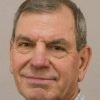
Author: Lawrence A. Crum Professor of Bioengineering and Electrical Engineering, Center for Industrial and Medical Ultrasound, University of Washington, Seattle, USA
Dr. Lawrence A. Crum is currently Principal Physicist and Chair of the Department of Acoustics and Electromagnetics in the Applied Physics Laboratory, and Research Professor of Bioengineering and Electrical Engineering at the University of Washington. He has held previous positions at Harvard University, the U. S. Naval Academy and the University of Mississippi, where he was F. A. P. Barnard Distinguished Professor of Physics and Director of the National Center for Physical Acoustics. He has published over 180 articles in professional journals, presented over 200 papers at professional meetings, and holds an honorary doctorate from the Universite Libre de Bruxelles. He is Past President of the Acoustical Society of America and current President of the Board of the International Commission for Acoustics. In June of 2000, he was awarded the Helmholtz-Rayleigh Interdisciplinary Silver Medal of the Acoustical Society of America.
Summary: Acoustic cavitation is a phenomenon that involves the interaction of an acoustic field with a gas bubble in a liquid. Since a bubble has a compressibility many orders of magnitude more than a liquid, the gas bubble can act as a means of concentrating the energy of the acoustic field to a restricted region of time and space. Concentrations of energy on the order of eleven orders of magnitude have been reported. This lecture will introduce cavitation as a physical phenomenon and describe some applications of cavitation to current topics in medical ultrasound.
Time:11:00
Place:Conference room, LabTAU, INSERM 151 Cours Albert Thomas

Author: Jeff Elias
William Jeffrey Elias was born in Durham, North Carolina, in 1968. He grew up in Roanoke as the son of a neurologist. He attended Wake Forest University and pursued a Bachelor of Arts degree in chemistry while also playing junior varsity tennis. While in college, he was awarded a scholarship for undergraduate research in chemistry and he graduated Phi Beta Kappa. He attended the University of Virginia for medical school and neurosurgical training. During neurosurgical training, he completed intramural fellowships in neuropathology and spinal surgery before spending a year in Plymouth, England, as a senior registrar. Following residency, he pursued additional training in stereotactic and functional neurosurgery at the Oregon Health Sciences University. In 2002, Dr. Elias returned to the University of Virginia where he is currently the director of stereotactic and functional neurosurgery with a large multidisciplinary program in the surgical treatment of movement disorders, epilepsy and spasticity. He currently sits on the medical advisory board of the International Essential Tremor Foundation (IETF). Dr. Elias’ clinical team includes Caroline Metsch, PAC, Kathy Maynard, RN, and Karen Osteen.
Summary: Therapeutic uses of FUS in the brain.
In the 1950s, neuroscientists and neurosurgeons became interested in using ultrasound to treat disorders deep in the brain. This never gained favor because of the difficulty transmitting acoustic energy through the intact skull. Recent advances in ultrasound transducer technology now enable the precise transmission of ultrasound, through the skull, to deep regions inside the brain. An increasing number of clinical trials now demonstrate the potential efficacy of MRI-guided focused ultrasound for the treatment of movement disorders and other neurologic conditions. This talk will review the current status of focused ultrasound therapy in human brain.
Time:16:00
Place:Conference room
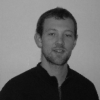
Auteur : Antoine Nordez
Résumé : Les propriétés biomécaniques d’un muscle ou d’un tendon peuvent aisément être évaluées sur modèle animal in vitro ou ex vivo. Ces évaluations sont fondamentales pour analyser la fonction musculaire et comprendre les effets d’entraînements, de désentraînement ou de pathologies. In vivo chez l’homme, des ergomètres peuvent être utilisés, mais ils renseignent sur les propriétés globales d’un système musculo-articulaire, sans différencier les comportements complexes des très nombreux muscles et structures constituant ce système. L’imagerie (principalement l’IRM ou l’échographie) permettent de mesurer des déplacements tissulaires au sein du système mais ne permet pas d’évaluer directement les propriétés mécaniques des muscles, ni les niveaux de tension ou de contrainte qu’ils subissent. En biomécanique musculaire ou tendineuse, nous sommes donc particulièrement intéressés par l’utilisation des méthodes d’élastographie. Lors de cette présentation, une synthèse des travaux réalisés dans notre laboratoire sera réalisée (voir les principales références ci-dessous). Je présenterai en particulier les atouts et limites de la technique commercialisée d’élastographie que nous avons utilisé (Supersonic Shear Imaging). Bien que nous ayons principalement mené des études fondamentales, de nombreuses applications cliniques de l’élastographie peuvent être envisagées sur la base de ces études.

Author: Professor Chrit Moonen de « lmage Sciences Institute » at Utrecht.
Summary: The Centre for Image Guided Oncological Interventions (CIGOI) of the UMC Utrecht is an initiative of the Division of Imaging at the University Medical Center, Utrecht, the Netherlands with the central objective to provide real-time image guidance for high precision in the treatment of localized tumors. Within the CIGOI a range of unique image-guided treatment techniques have been developed such as MRI controlled 'High Intensity Focused Ultrasound (MRI guided HIFU), MRI-driven linear accelerator (first prototype installed at UMCU), MRI guided robotic brachytherapy, and intra-arterial radio-embolization with holmium microspheres.

Author: Emily White MD Director of operations, Charlottesville, USA
Summary: Emily White, MD joined the Foundation in 2016 as Director of Operations. Prior to joining the Foundation, Dr. White was a private consultant working in operations and business development support in the healthcare and medical start-up space. Her clients have included everything from a 4,000+ employee, publically traded, health care company to a brand new start-up with two employees. Her background includes training in general surgery, leadership positions in several highly technical start-up companies with federal clients, non-profit executive management and over 25 years of grant writing experience. She completed her undergraduate degree in Biology & Anthropology at Smith College, holds certification for Community Conflict Resolution from Loyola Law School, and is a University of Virginia School of Medicine graduate.

Author: Professor Paul Barbone, Mechanical Engineering, Boston University.
Summary: Isotropic solid materials can support the propagation of both dilatational waves and distortional waves, the latter better known as shear waves. Propagation of shear waves in soft tissues is a subject of considerable current interest in the biomechanics and biomedical imaging communities. For that purpose, we present an axisymmetric model of elastic shear wave propagation to measure dispersive wave speed and attenuation in homogeneous elastic media. Biomedical imaging applications, however, present much more fun and exotic situations to study shear waves, including in the presence of strong magnetic fields, superposed large poroelastic deformations, strong material property gradients, and medium activation. We use mathematical models to study elastic shear wave propagation in these scenarios.
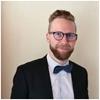
Author: Heikki J. Nieminen.
Summary: Non-linear ultrasonics enables actuation of matter from a distance in non-contacting manner. At will this can be achieved with negligible thermal effects. Examples of ultrasonic actuation methods include drug transport, ultrasonic manipulation of nano-fiber drug-delivery systems and acoustic levitation of small animals. The talk will give an insight to such ultrasonic biomedical actuation methods investigated at Medical Ultrasonics Laboratory (MEDUSA), Aalto University, Finland.
